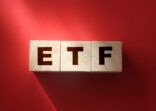China’s central bank, the People’s Bank of China, carried out a surprise devaluation in August by changing its daily fixing mechanism, leading to about a 3% devaluation of the RMB against the US dollar. That contributed to global market volatility as investor concerns over China increased. In trade-weighted terms, however, industry sources note that the RMB has already recouped nearly all its losses versus the US dollar since August.
The poor manner in which China communicated its currency reform led to strong speculative downward pressure on the RMB, forcing the PBOC to step up intervention in August and September to prevent a further slide.
BSI Bank noted that the PBOC lowered the one-year lending and deposit interest rate by 0.25% to 4.35% and 1.5% respectively.
The interest rate cut was the sixth since November 2014.
The PBOC also cut the reserve requirement ratio (RRR) by 0.5% to 17.5% for all banks, with an extra 0.5% reduction for institutions focused on rural and SME loans.
“There is still room for lower rates, which is beneficial to the onshore and offshore bond market. One or two more rounds of interest rate cuts and RRR reductions could be likely toward the end of 2015 and into 2016,” BSI Bank added.
Another factor impacting the RMB is the widely expected inclusion of the currency in the IMF’s SDR basket of currencies. Some portfolio managers believe central banks and institutional investors will find they are underweight China’s currency and start allocating to RMB fixed income.
Given the rising global importance of China’s currency, Fund Selector Asia compares two relatively new products: the Fullerton RMB Bond Fund and the ChinaAMC Select RMB Bond Fund.
Wendy Lim, fund advisor at BSI Bank, provides a comparative analysis.
Investment strategy review
The Fullerton fund, led by CIO Manraj Sekhon, seeks to achieve a gross target yield of 3-4% per annum at a steady rate.
Sekhon and his team invest primarily in RMB-denominated bonds, both onshore (CNY) and offshore (CNH), with a mix of money market instruments, certificates of deposits, term deposits, credit linked bonds and convertibles. Sekhon also utilises US-denominated bonds, credit linked notes, currency forwards and currency swaps.
















